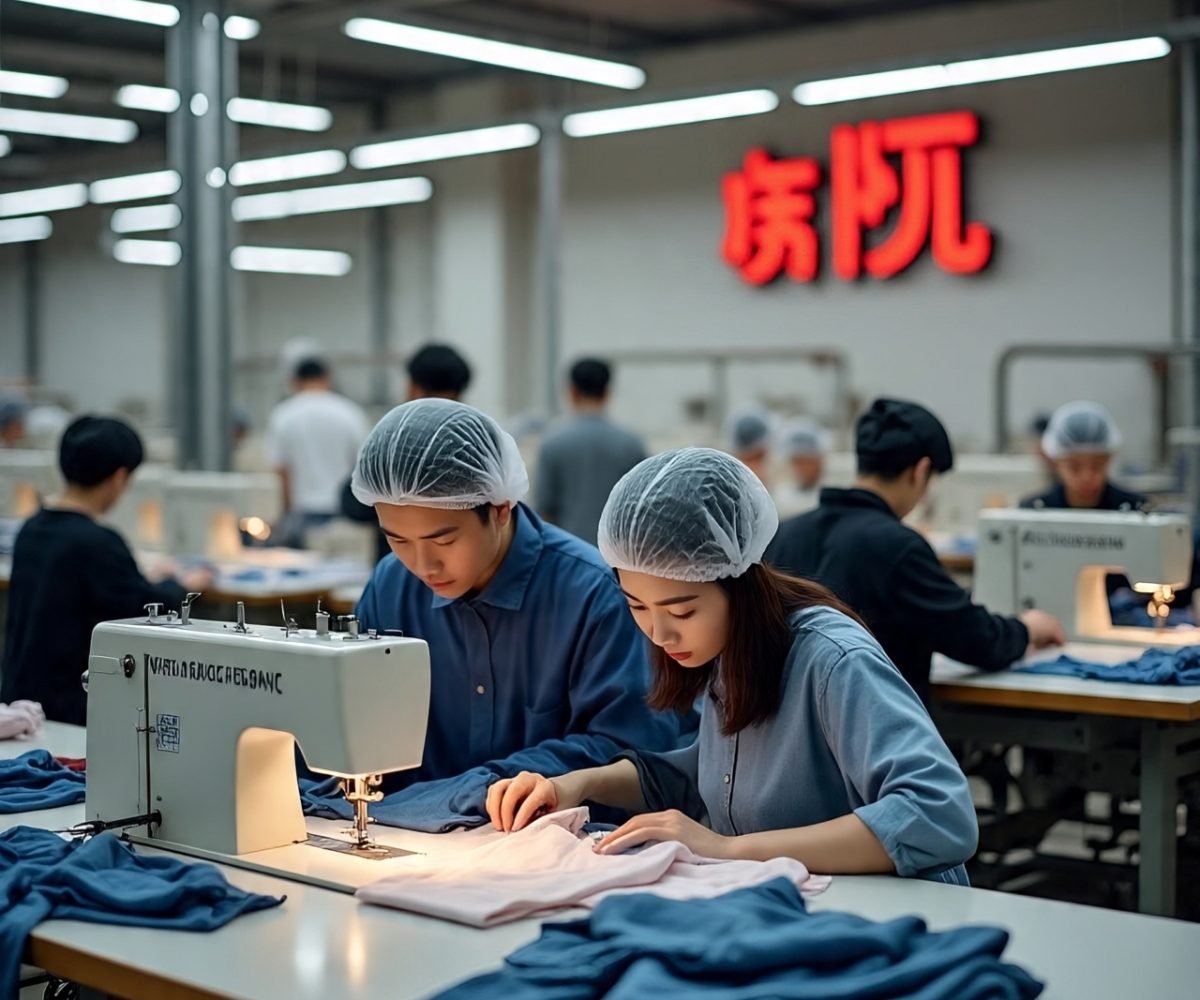Trump’s trade war cools momentum in China’s once-booming fast-fashion manufacturing hub.

At a labor market in Panyu—an urban village on the fringes of Guangzhou—Ms. Qiu waits in vain for a one-day sewing job. She’s hoping to find work stitching low-cost tops and dresses for China’s e-commerce platforms or for export to Western markets. But her chances are slim.
“The industry is in trouble, and with high tariffs on Chinese goods due to the trade war, many international buyers have scaled back their orders,” she explains, withholding her full name.
Guangzhou, the bustling capital of Guangdong province with nearly 20 million residents, is the center of China’s fast-fashion manufacturing. In the city’s urban villages—dense neighborhoods absorbed into the expanding metropolis—millions work in informal workshops producing cheap clothing. In one cramped factory, women operate sewing machines beside towering piles of black tutus. In another, pink denim jeans headed to fast fashion giant Shein cover every surface.
Each morning, workers gather at informal hiring hubs, like the one in Panyu, hoping for tasks like button sewing or collar pressing. Pay depends on task complexity—anywhere from one to ten yuan per item. The work environment is tight and tiring.
“This is money earned through sweat,” says a man in his 60s from Datang, another nearby village. Speaking while ironing jackets before shipment, he said his shift began the night before at 11 p.m. and continued past 8 a.m. He makes two yuan per jacket. Workers interviewed by The Guardian commonly described 10- to 12-hour shifts, with only one day off per month.
Shrinking Profits
Despite a booming local e-commerce market, it’s the international orders that sustain these factories. Last year, about a quarter of the $100 billion in textiles and apparel imported by the U.S. came from China. Guangdong alone exported over $7 billion, per data from Sinoimex’s Global Trade & Industry Growth Lab.
But in April, U.S. President Donald Trump launched a trade war with China, sending tremors through global markets. Tariffs on Chinese goods reached as high as 145%. China retaliated, leading to mutual restrictions until both countries agreed to a 90-day pause in May. As the August 12 negotiation deadline nears, workers in Guangzhou worry about the future of U.S. orders.
Yang Ruiping, who has operated a small garment factory in Panyu for 20 years, now exports only 30% of his products—mainly to Shein and Amazon—down from over 50% pre-pandemic. While the trade war’s pause has provided slight relief, Yang remains doubtful about the U.S. market.
“If tariffs rise again, we have to reduce costs to compete,” he says. “There’s barely any margin left.” He already sells items at a loss just to keep his factory running. With increased competition in the domestic market and no space to reduce wages further, Yang fears closure might be inevitable.
Shein’s presence is everywhere in Panyu. The China-born, Singapore-based firm transformed the local garment industry by enabling small-scale producers like Yang to reach international buyers. Unlike traditional retail brands, Shein places small trial orders and scales up production for the bestsellers. This nimble model has powered its rapid rise—Shein now accounts for roughly 50% of the U.S. fast fashion market, per Bloomberg Second Measure.
Its success was also helped by U.S. customs loopholes. In 2022, over 30% of small parcels imported under the “de minimis” rule—exempting low-value items from tariffs—came from Shein and Temu. On May 2, Trump shut that loophole for Chinese and Hong Kong goods. Later, the exemption was removed for all countries, closing off rerouting options. According to a Reuters analysis, Shein’s prices rose 23% between April 24 and July 22.
“The U.S. market is unstable and risky,” says Peng Jianshen, who runs a medium-sized denim factory in Zengcheng, another part of Guangzhou. “When tariffs jumped, all U.S.-oriented production halted. No one dared continue.”
Labor experts warn that the trade war may worsen working conditions. “In the garment industry here, workers rarely get rest days,” says Li Qiang, head of U.S.-based China Labor Watch. “They’re paid per item, so they push themselves harder when orders are still coming in.”
But factory owners say the trade war is just one of many issues. Global crises and weak consumer demand in China have made it tough to shift focus to new markets.
Li Jun, a factory owner who smokes constantly, used to export 100,000 pairs of jeans a month, over half to Russia. Now it’s down to 30,000–40,000 pairs, barely keeping his operation afloat. “The global economy is poor, and many factories are shutting down,” he says. The war in Ukraine and the conscription of many of his Russian customers have hurt sales.
Historically, cities like Guangzhou powered China’s economic rise through manufacturing. But in recent years, Beijing has shifted support toward high-tech sectors like AI and semiconductors, distancing itself from small-scale industries. “The government no longer backs small businesses or traditional industries like ours,” says Li. “It’s extremely hard to survive now.”
For any quarries contact us
